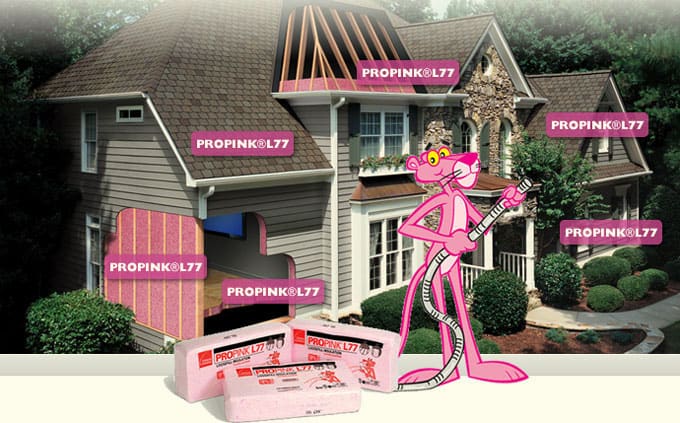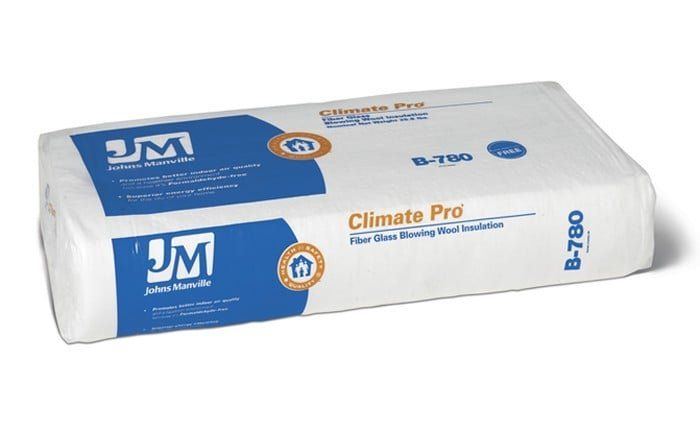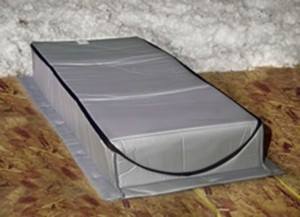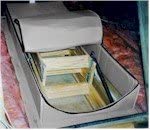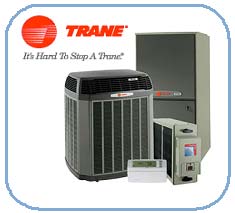ATTIC INSULATION SERVICE
Energy loss from a home is inevitable. The forces of equilibrium, the physics of nature, continually strive to balance the heat energy on the inside, with that on the outside. Even in the best built houses, when the heating or cooling system goes OFF, without proper insulation the overall temperatures immediately begin to equalize. Our Attic Insulation Service in Plano, TX helps to make energy loss from a home as slow as possible, to minimize the amount of time the heating or cooling system must be on to keep the temperature within a comfortable range. To help achieve this objective, attic insulation is used to control convection.
Energy loss from a home is inevitable. The forces of equilibrium, the physics of nature, continually strive to balance the heat energy on the inside, with that on the outside. Even in the best built houses, when the heating or cooling system goes OFF, without proper insulation the overall temperatures immediately begin to equalize. Our Attic Insulation Service in Plano, TX helps to make energy loss from a home as slow as possible, to minimize the amount of time the heating or cooling system must be on to keep the temperature within a comfortable range. To help achieve this objective, attic insulation is used to control convection.
CONVECTION
One of the most effective ways to increase thermal efficiency is to minimize convection by keeping cold air “out of circulation”. The focus is on convection as it relates to attic insulation, particularly blown-in attic insulation. The principles of convection are important to understand both to minimize its undesirable effects, and also to better explain preventative measures.
Convection is the transfer of heat via the movement of air. Hot air is less dense than cold air, so it tends to rise; the denser cold air tends to sink. In winter, currents of hot air rising and cold air sinking, are created within the home by the heating system (hot air rising), and by heat loss through conduction and air infiltration (cold air sinking).
The better our attic insulation service is in Plano TX, the more effectively air infiltration is controlled, and the less convection there is inside the house. The interior air is allowed to approach a state of equilibrium, and the temperature within the home remains more uniform.
CONVECTION
One of the most effective ways to increase thermal efficiency is to minimize convection by keeping cold air “out of circulation”. The focus is on convection as it relates to attic insulation, particularly blown-in attic insulation. The principles of convection are important to understand both to minimize its undesirable effects, and also to better explain preventative measures.
Convection is the transfer of heat via the movement of air. Hot air is less dense than cold air, so it tends to rise; the denser cold air tends to sink. In winter, currents of hot air rising and cold air sinking, are created within the home by the heating system (hot air rising), and by heat loss through conduction and air infiltration (cold air sinking).
The better our attic insulation service is in Plano TX, the more effectively air infiltration is controlled, and the less convection there is inside the house. The interior air is allowed to approach a state of equilibrium, and the temperature within the home remains more uniform.
CONVECTION IN ATTICS
Convection is a natural process that can be controlled through the proper application of insulation. In a cold uninsulated attic, heat conducted through the ceiling warms the air near the attic floor. The warm air rises toward the roof, where it loses its heat.
This cooled air then sinks, and is replaced once again by warmed air from the attic floor. This continuous process is called a convective loop, and it is very effective at transferring heat. Fortunately, insulation breaks the convective loop by greatly reducing the conduction of heat from the ceiling to the attic air.
CONVECTION IN ATTICS
Convection is a natural process that can be controlled through the proper application of insulation. In a cold uninsulated attic, heat conducted through the ceiling warms the air near the attic floor. The warm air rises toward the roof, where it loses its heat.
This cooled air then sinks, and is replaced once again by warmed air from the attic floor. This continuous process is called a convective loop, and it is very effective at transferring heat. Fortunately, insulation breaks the convective loop by greatly reducing the conduction of heat from the ceiling to the attic air.
BLOWING WOOL INSULATION
In large measure, the performance of blown insulation products is controlled by the installer. There are two important guidelines that must be consistently followed to ensure that the insulation is properly applied over the entire attic area: The attic insulation must be applied at or above the correct density for the desired R-value.
This is often checked by counting the number of bags specified for the area to be covered. The attic insulation must be applied at or above the specified minimum thickness for the desired R-value. As a qualified thermal efficiency expert, Kleen Air Services has a significant investment in equipment, materials, and training to ensure that each attic insulation service that we perform in Plano, TX is individually engineered to provide the stated R-value at the specified thickness for its Rich-R and Climate Pro loose-fill insulation.
If the loose-fill is applied at the minimum thickness, extensive testing has shown that it will be dense enough to achieve the specified R-value. This testing enables manufacturers to label their products accurately, beyond all FTC requirements, and allow for application variations at the same time. Any home can benefit from attic insulation
In large measure, the performance of blown insulation products is controlled by the installer. There are two important guidelines that must be consistently followed to ensure that the insulation is properly applied over the entire attic area: The attic insulation must be applied at or above the correct density for the desired R-value.
This is often checked by counting the number of bags specified for the area to be covered. The attic insulation must be applied at or above the specified minimum thickness for the desired R-value. As a qualified thermal efficiency expert, Kleen Air Services has a significant investment in equipment, materials, and training to ensure that each attic insulation service that we perform in Plano, TX is individually engineered to provide the stated R-value at the specified thickness for its Rich-R and Climate Pro loose-fill insulation.
If the loose-fill is applied at the minimum thickness, extensive testing has shown that it will be dense enough to achieve the specified R-value. This testing enables manufacturers to label their products accurately, beyond all FTC requirements, and allow for application variations at the same time. Any home can benefit from attic insulation
Before installation of attic insulation, Kleen Air Service’s technician follow these important steps to guarantee proper attic insulation installation:
- The finding and sealing of all attic air leaks. Remember, most insulation does not stop airflow!
- We use a tightly constructed box to cover duct exhaust fan housing on the attic side. We also seal around the duct where it exits the box and seal the perimeter of the box to the drywall on the attic side.
- Cover openings such as, dropped ceilings, soffits and bulkheads into the attic area with plywood and seal to the attic side of the ceiling.
- Seal around chimney and framing with a high-temperature caulk or furnace cement.
- At the tops of interior walls, we use long-life caulk to seal the smaller gaps and holes and expanding foam or strips of rigid foam board insulation for the larger gaps.
- Install metal flashing blocking to maintain fire-safety clearance requirements (usually 3 inches) for heat-producing equipment found in an attic, such as flues, chimneys and exhaust fans. We also include light housings/fixtures unless the fixtures are IC (insulation contact) rated; IC rated lights are airtight and can be covered with insulation.
- We make sure insulation doesn’t block soffit vents to allow for proper attic ventilation.
- Another important task is to check the attic ceiling for water stains or marks, which indicate roof leaks or lack of ventilation.
- We insulate and air seal attic access if it’s located in a conditioned part of the house.
- Then we properly insulate and air seal any knee walls or vertical walls with attic space directly behind them.
ATTIC TENT
Before installation of attic insulation, Kleen Air Service’s technician follow these important steps to guarantee proper attic insulation installation:
- The finding and sealing of all attic air leaks. Remember, most insulation does not stop airflow!
- We use a tightly constructed box to cover duct exhaust fan housing on the attic side. We also seal around the duct where it exits the box and seal the perimeter of the box to the drywall on the attic side.
- Cover openings such as, dropped ceilings, soffits and bulkheads into the attic area with plywood and seal to the attic side of the ceiling.
- Seal around chimney and framing with a high-temperature caulk or furnace cement.
- At the tops of interior walls, we use long-life caulk to seal the smaller gaps and holes and expanding foam or strips of rigid foam board insulation for the larger gaps.
- Install metal flashing blocking to maintain fire-safety clearance requirements (usually 3 inches) for heat-producing equipment found in an attic, such as flues, chimneys and exhaust fans. We also include light housings/fixtures unless the fixtures are IC (insulation contact) rated; IC rated lights are airtight and can be covered with insulation.
- We make sure insulation doesn’t block soffit vents to allow for proper attic ventilation.
- Another important task is to check the attic ceiling for water stains or marks, which indicate roof leaks or lack of ventilation.
- We insulate and air seal attic access if it’s located in a conditioned part of the house.
- Then we properly insulate and air seal any knee walls or vertical walls with attic space directly behind them.
Let us know if we can help you with any of your attic insulation needs. You can contact us directly at (972) 527-3207.


